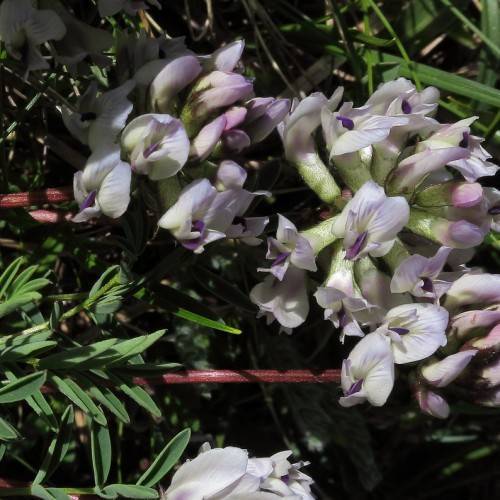
Indian Milk Vetch
Astragalus australis
Watering:
Minimal
Hardiness Zone:
Sun:
full sun,part shade
Fruits:
Fruits Ready In Summer
Leaf:
Yes
Growth Rate:
Low
Drought Tolerant:
Yes
Care Level:
Medium
watering
Alpine Milkvetch requires little water to thrive, especially when grown in soil with good drainage. Generally, it should only be watered once every 2 weeks, making sure the soil remains consistently moist but not wet. During dry spells, you may need to increase the frequency or amount of water slightly. It’s important to avoid overwatering, as this can lead to root rot. If you’re growing the plant in a container, make sure it has a drainage hole and use a potting mix that isn’t prone to waterlogging. Pay attention to the plant’s needs, and water more or less frequently according to the conditions.
sunlight
Alpine Milkvetch, also known as Astragalus alpinus var. alpinus, prefers a cool, sunny position with at least 6 hours of direct sunlight a day. This plant favors light, well-drained soils and does best when it can receive full sun in the morning, with some partial shade during the hottest part of the day. During the hottest days of summer, however, too much sun can lead to burns on the leaves, so make sure to provide some protection during the afternoon hours. Additionally, Alpine Milkvetch enjoys cooler temperatures at night, and it does not do well in humid conditions.
pruning
Alpine Milkvetch should be lightly pruned during the early spring (April) of each year, taking off any dead or diseased branches. Pruning will help encourage healthy new growth and ensure the shrub maintains an attractive shape. For best results, the stems should be trimmed first, with the tallest cut back about a third of their length and the sides cut back to the desired shape. After that, any thick, overgrown branches should be pruned back to about 2 thirds of their original length to encourage bushier growth. To keep it healthy, trim away any crossed or damaged branches and remove suckers (i.e., shoots from the roots) regularly.
